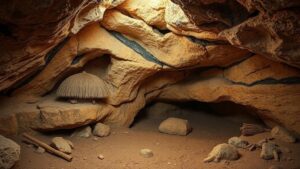Applying Biblical and Religious Knowledge to Decode Sacred Treasure Clues
Applying Biblical and Religious Knowledge to Decode Sacred Treasure Clues
The quest for sacred treasures often intertwines with the rich tapestry of religious texts and traditions. This intersection between biblical narratives and historically significant treasures provides a fertile ground for understanding how religious knowledge can inform treasure hunting. This article explores the methods and applications of biblical and religious insights when decoding clues related to sacred treasures.
The Significance of Biblical Knowledge in Treasure Hunting
Biblical knowledge encompasses a wide array of texts, interpretations, and historical contexts that can illuminate paths to hidden treasures. Many treasures mentioned in scripture are laden with symbolic meanings, which can aid seekers in interpreting clues accurately. For example, the concept of treasure can often be found in parables, such as the Parable of the Hidden Treasure (Matthew 13:44), which teaches the value of pursuing spiritual wealth.
Case Study: The Ark of the Covenant
One of the most famous biblical artifacts, the Ark of the Covenant, is deeply embedded in religious history and presents a compelling example of how biblical narratives can provide clues to treasure seekers. According to texts, the Ark contained sacred relics, including the tablets of the Law given to Moses. While the location of the Ark is unknown, biblical clues suggest it may have been hidden in places of great spiritual significance, such as Mount Nebo (Deuteronomy 34:5-6).
Researchers have utilized archaeological methods to search for the Ark, relying on biblical descriptions and regional histories. Theories suggest that studying ancient texts and understanding the cultural importance of locations mentioned may yield further clues in the search for the Ark.
Decoding Clues from Religious Texts
Decoding clues from various religious texts can enhance the understanding of potential treasure locations. There are critical strategies to consider:
- Contextual Reading: Analyze the historical and cultural contexts of the biblical passages. For example, examining the socio-political landscape during the time of the Exodus provides insight into possible treasure locations.
- Symbolic Interpretation: Many religious symbols carry layers of meaning. The “pearl of great price” (Matthew 13:46) symbolizes profound wisdom or truth, which can guide seekers toward treasures that are valuable beyond material worth.
- Cross-Referencing Texts: Use various religious texts for a richer understanding. Islamic texts often mention treasures linked to biblical accounts, providing additional perspectives and clues.
The Role of Archaeology and Historical Context
Archaeological findings have increasingly corroborated the accounts found in biblical texts, giving tangible evidence to otherwise intangible narratives. discovery of the Dead Sea Scrolls is a case in point; these texts contain references that have altered our understanding of Jewish history and scriptural fidelity.
Also, archaeological expeditions often apply a multidisciplinary approach, utilizing geography, history, and religious studies to locate treasures. For example, the search for the lost city of Atlantis became more coherent when sea-level changes were considered alongside mythological texts, suggesting possible real-world analogs for these sacred narratives.
Real-World Implications of Applying Religious Knowledge
Many treasure hunters and scholars have successfully applied biblical knowledge in their pursuits, with notable outcomes. An example is the search for the treasures of King Solomon, which have inspired numerous expeditions into ancient territories. Texts such as 1 Kings 10:14 detail the wealth amassed by Solomon, guiding archaeologists to potential sites revealing lost riches.
Plus, the integration of technology, such as ground-penetrating radar and satellite imaging, has enhanced the ability to pinpoint sacred treasure locations based on inferred biblical clues. But, ethical considerations surrounding treasure hunting, particularly in sacred sites, must be taken into account.
Addressing Questions and Concerns
One essential question arises: How can seekers differentiate between myth and reality when interpreting sacred texts? A balanced approach is necessary. Engaging with scholarly interpretations, consulting archaeological evidence, and respecting the spiritual significance of the texts can minimize the risk of sensationalism and misunderstanding.
Conclusion: Actionable Takeaways
To wrap up, applying biblical and religious knowledge effectively can unlock mysteries surrounding sacred treasures. By employing strategies such as contextual reading, symbolic interpretation, and cross-referencing, seekers can enhance their treasure hunting endeavors while respecting the cultural heritage involved.
Future treasure hunters should:
- Engage deeply with biblical texts and their historical contexts.
- Use modern archaeological techniques in conjunction with sacred texts.
- Consider the ethical implications of treasure hunting, particularly in sacred spaces.
In marrying ancient wisdom with modern practices, the quest for understanding and uncovering sacred treasures can be both enlightening and respectful. By doing so, seekers stand a better chance of making discoveries that honor the past while adding value to the present.


